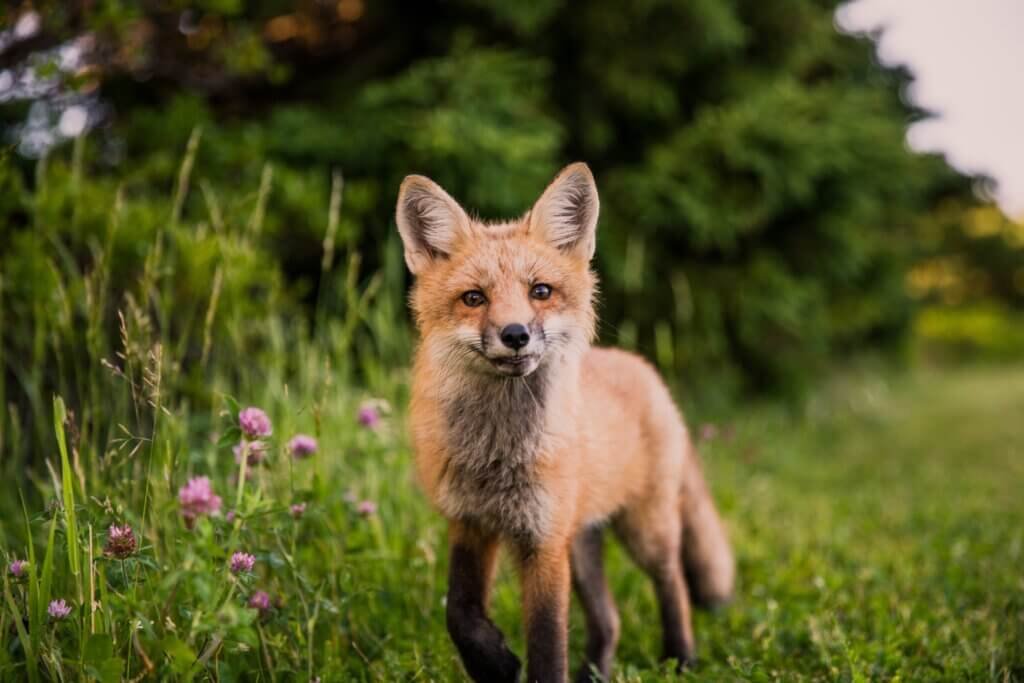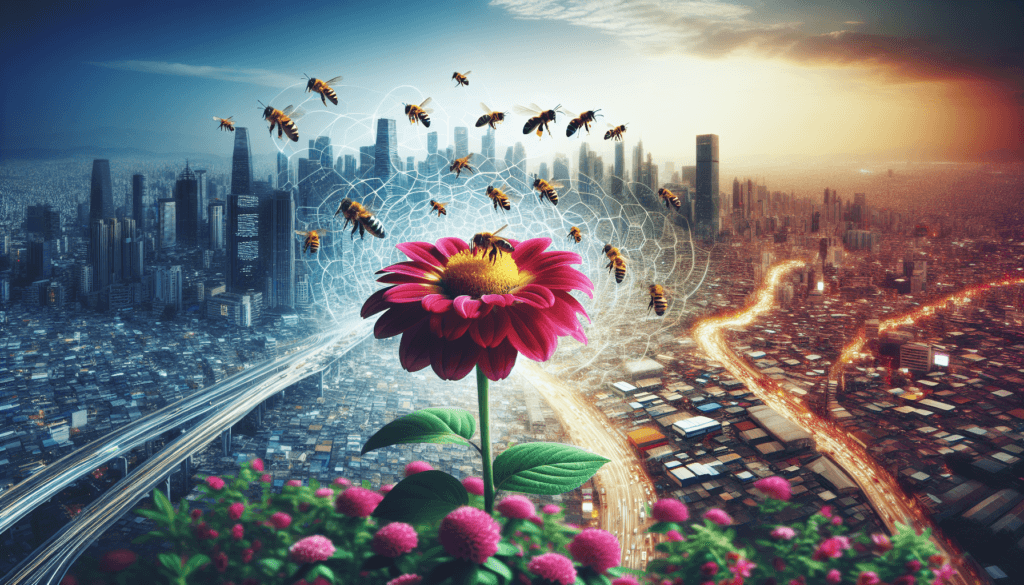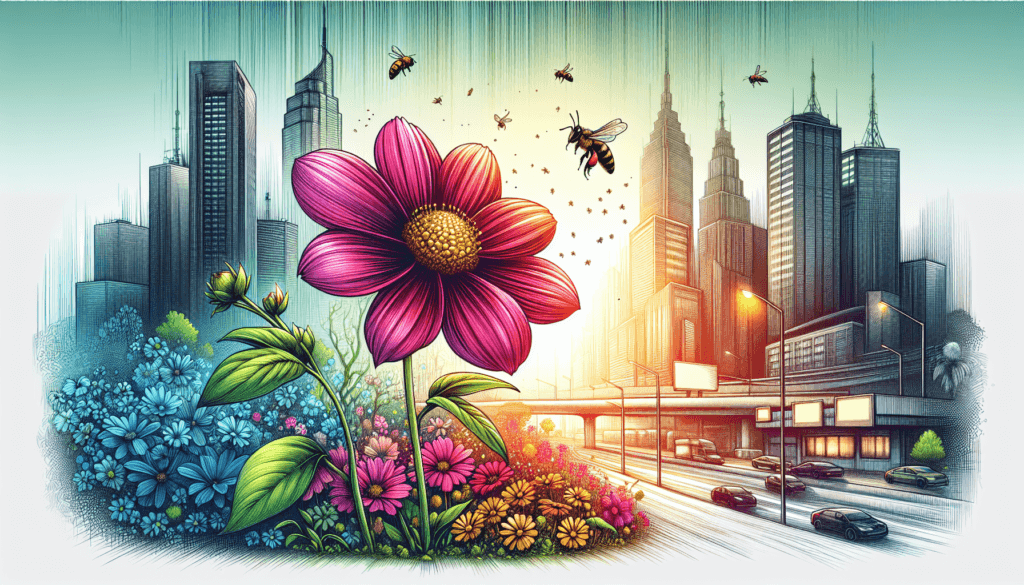Want to transform your urban garden into a buzzing oasis? Look no further! In this article, we will explore the top ways to attract pollinators to your urban garden. These helpful creatures play a vital role in our ecosystem, ensuring the pollination of plants and the production of delicious fruits and vegetables. So, whether you’re an experienced gardener or just starting out, grab your gardening gloves and get ready to welcome an array of beautiful butterflies, buzzing bees, and fluttering hummingbirds to your garden sanctuary. Let’s dive in!
Choose Native Plants
One of the most effective ways to attract pollinators to your garden is by selecting plant species that are native to your region. Native plants have evolved alongside native pollinators and have developed a strong mutual relationship. By planting native plants, you are providing a familiar and reliable food source for pollinators, increasing the likelihood of attracting them to your garden. Additionally, native plants are often well adapted to the local climate and soil conditions, making them easier to grow and maintain.
To further enhance pollinator attraction, be sure to research which native plants in your area are particularly attractive to pollinators. Certain plants, such as milkweed for monarch butterflies or bee balm for bees, are known to be highly appealing to specific pollinators. By incorporating these specific plants into your garden, you can greatly increase the chances of attracting a diverse range of pollinators. Remember to choose a variety of flowering plants that bloom at different times throughout the year to provide a continuous source of nectar and pollen for pollinators.
Create a Diversity of Habitats
Pollinators thrive in diverse habitats that provide a variety of resources. Incorporating different types of plants, such as trees, shrubs, and herbaceous plants, into your garden can create a multi-layered habitat that caters to different pollinator species. Trees and shrubs offer nesting sites and provide shelter from weather conditions, while herbaceous plants serve as nectar and pollen sources. By including plants of different heights and layers in your garden, you can cater to the needs of different pollinators and increase the overall biodiversity of your garden.
In addition to incorporating different plant types, aim to use a mix of plant shapes, sizes, and colors. This variety will not only create an aesthetically pleasing garden but will also attract a wider range of pollinators. Some pollinators are attracted to specific colors, while others are drawn to certain plant shapes. By diversifying the visual characteristics of your garden, you can create a more inviting space for pollinators.

Provide a Water Source
Just like any other living creature, pollinators need access to water for hydration. Providing a reliable water source in your garden can greatly enhance its attractiveness to pollinators. Consider incorporating a shallow dish filled with clean water. This dish can serve as a drinking spot for pollinators, especially on hot summer days when water sources may be scarce. To further enhance the appeal of your water feature, you might also consider adding a small fountain or water feature. The sound and movement of water can help attract pollinators and create a soothing ambiance in your garden.
Remember to keep the water source clean and free from debris to ensure the health and safety of the pollinators. Replace the water regularly to prevent the growth of bacteria or mosquito breeding. By providing a clean and reliable water source, you are not only attracting pollinators but also taking care of their well-being.
Avoid Pesticides
One of the most important steps in creating a pollinator-friendly garden is to limit or eliminate the use of pesticides. Pesticides can be harmful to pollinators, as they can kill bees, butterflies, and other beneficial insects. Instead of relying on chemical pesticides, consider using organic and natural pest control methods. For example, you can introduce beneficial insects to your garden, such as ladybugs, lacewings, or praying mantises, which prey on garden pests.
Integrated pest management (IPM) practices can also be implemented to minimize the need for pesticides. This technique involves monitoring and identifying pests, then taking action only when necessary. This targeted approach reduces the overall pesticide use in your garden and protects the delicate balance of the ecosystem.
By avoiding pesticides and embracing natural pest control methods, you are not only protecting pollinators but also creating a healthier and more sustainable garden environment.

Plant Flowers with a Fragrance
Fragrant flowers not only add a delightful scent to your garden but also attract more pollinators. Many pollinators, such as bees and moths, are particularly sensitive to scents and are drawn to flowers with strong fragrances. By choosing flowers that emit a pleasant scent, you can increase the chances of attracting a diverse range of pollinators.
Consider planting flowers with different scents to appeal to a variety of pollinators. Some pollinators, like bees, are attracted to the sweet scent of flowers such as lavender or jasmine, while others, like butterflies, are drawn to floral scents like roses or lilacs. Research the preferences of different pollinators in your area and select a mix of fragrant flowers to create an enticing environment for them.
Design Butterfly and Bee-Friendly Features
To specifically cater to butterflies and bees, consider adding specific elements to your garden design. One option is to include butterfly houses or bee hotels. These structures provide nesting spots and shelter for butterflies and bees. Butterfly houses often have slits or small openings where butterflies can seek refuge during unfavorable weather conditions or overnight. Bee hotels consist of small tubes or holes that mimic natural nesting cavities for solitary bees.
Another way to attract bees is to create areas with sandy or muddy soil. Many species of bees, including ground-nesting bees, require soil with a specific texture for constructing their nests. By providing areas with bare soil or creating small sandy patches, you can provide suitable nesting sites for bees.
Including these butterfly and bee-friendly features in your garden not only enhances the attractiveness of your garden to these specific pollinators but also creates a hospitable environment for their nesting and shelter needs.

Use Companion Planting
Companion planting is a gardening technique where flowers, herbs, and vegetables that attract pollinators are planted alongside each other. By strategically arranging these plants, you can increase the number of pollinator visits and improve your overall crop yield.
Research which plants work well together and attract the most pollinators in your area. For example, planting marigolds or zinnias near vegetable crops can help attract beneficial insects like bees and ladybugs, which are effective pollinators and natural pest control agents. Be sure to consider the bloom times of different plants and select varieties that will provide a continuous source of nectar and pollen throughout the growing season.
By using companion planting techniques, you are not only maximizing the pollination potential of your garden but also creating a vibrant and thriving ecosystem.
Provide Shelter and Nesting Sites
In addition to food sources, pollinators also require shelter and nesting sites in your garden. By incorporating specific plants that provide shelter, you can create a more inviting and hospitable environment for pollinators. Tall grasses, such as switchgrass or bluestem, can serve as natural shelters for bees and butterflies. Shrubs, like lavender or butterfly bush, offer protection from the elements and provide nesting spots for pollinators.
To further enhance the availability of nesting sites, leave dead tree branches or logs in your garden. These provide ideal nesting spots for cavity-nesting bees, as well as other beneficial insects like beetles or spiders. Additionally, you can create areas with bare soil to accommodate ground-nesting bees, which require open ground for constructing their nests.
By providing shelter and nesting sites, you are creating a safe and welcoming habitat for pollinators to thrive in your garden.

Maintain a Year-Round Food Supply
To attract and support pollinators throughout the year, it is essential to include flowers that bloom at different times. By ensuring a year-round supply of food sources, you can cater to the needs of pollinators in every season. Spring-flowering plants, such as crocuses or daffodils, provide much-needed nourishment for pollinators emerging from hibernation. Summer-flowering plants, like coneflowers or sunflowers, offer abundant nectar and pollen during the peak of the pollination season.
However, it’s important not to forget about the fall season. Many pollinators, including butterflies and bees, rely on late-flowering plants to sustain themselves before winter. Adding plants like asters or goldenrods can provide a vital food source during this crucial period.
By maintaining a year-round food supply, you are ensuring that pollinators have the resources they need to survive and thrive in your garden.
Educate and Encourage Others
Creating a pollinator-friendly garden is not only beneficial for your immediate environment but also for the larger community. By spreading awareness about the importance of pollinators and the actions individuals can take to support them, you can make a significant impact.
Use your knowledge and passion to educate others about the benefits of attracting pollinators to their gardens. Share information on social media platforms, join local gardening groups, or organize community workshops to teach others about creating pollinator-friendly spaces. Encourage your neighbors, friends, and family members to embrace pollinator-friendly gardening practices, and offer support and advice along the way.
By working together and inspiring others, you can create a network of pollinator-friendly gardens that not only benefit the pollinators but also contribute to the overall conservation of these vital species.
In conclusion, attracting pollinators to your urban garden requires a thoughtful and intentional approach. By choosing native plants, creating a diverse habitat, providing a water source, avoiding pesticides, planting fragrant flowers, incorporating butterfly and bee-friendly features, using companion planting, providing shelter and nesting sites, maintaining a year-round food supply, and educating and encouraging others, you can create a thriving pollinator oasis in the heart of the city. Start by implementing these strategies and watch as your garden becomes a haven for butterflies, bees, and other essential pollinators.



